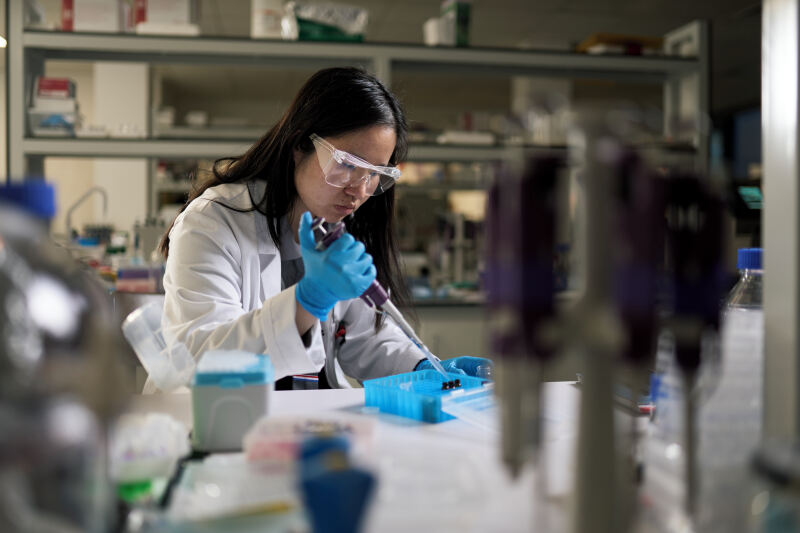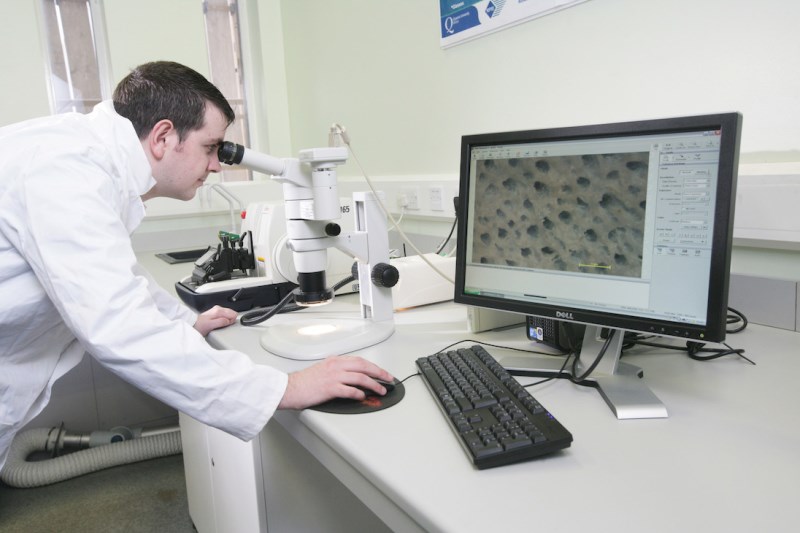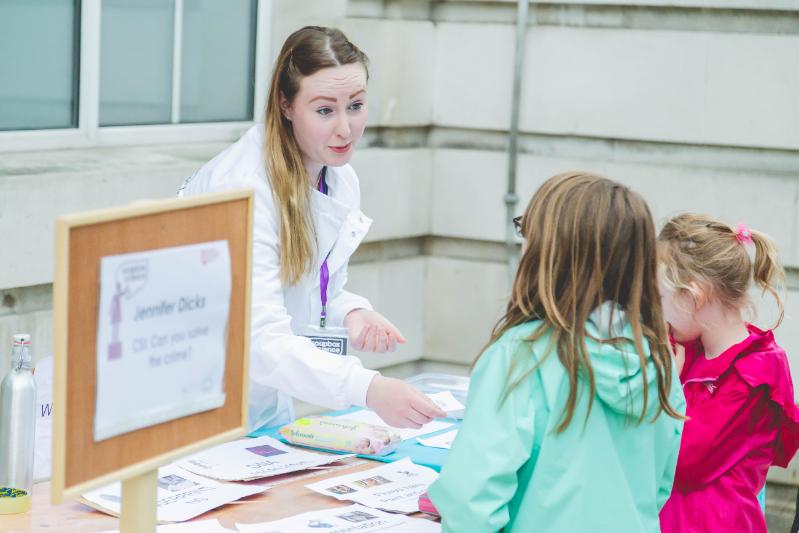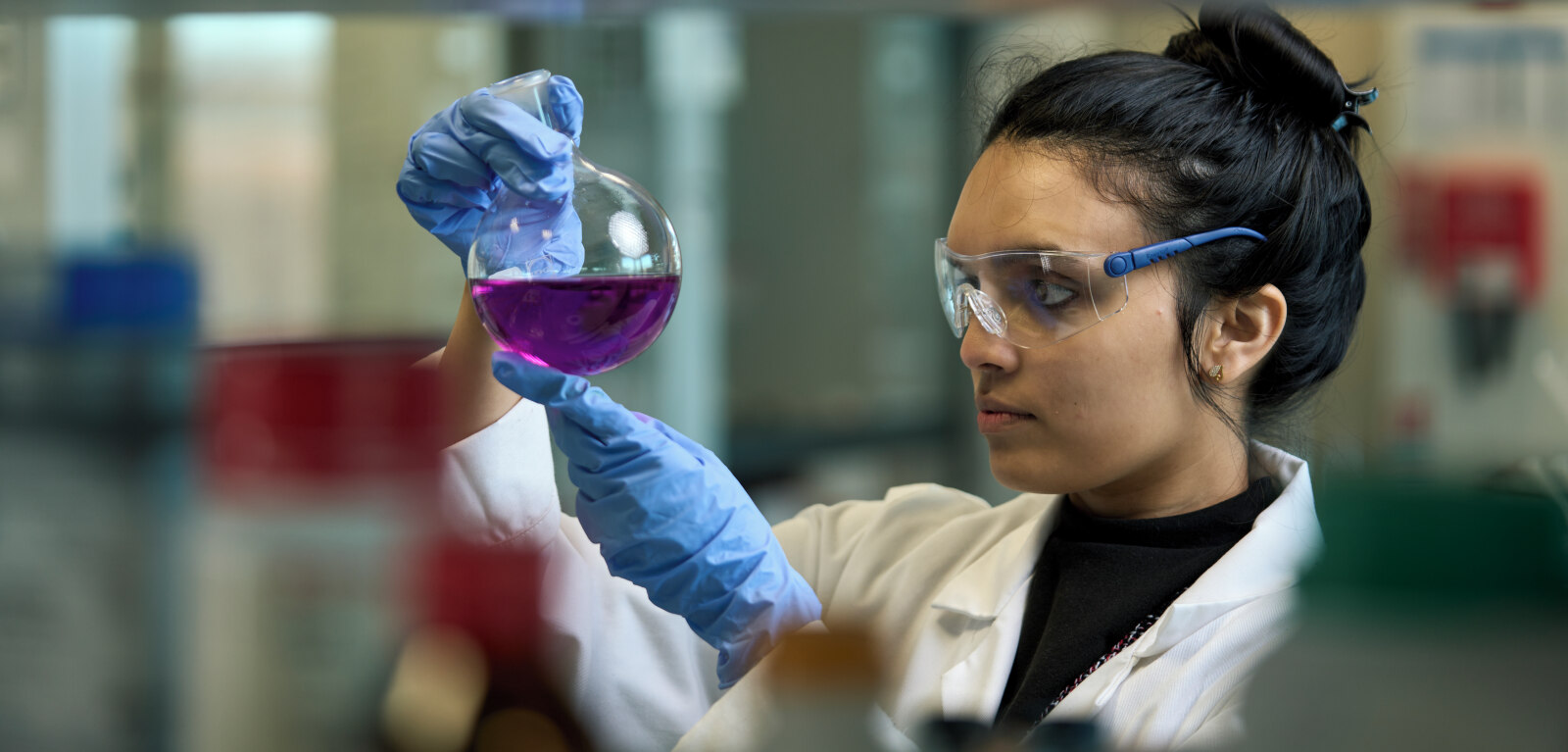Research
(Complete University Guide 2021)
We bring together fundamental and applied research, generating real-world impact, evidenced by vibrant spin-out activity and high-profile industrial collaborations.

Healthcare, sustainability and fundamental studies
Our research falls under three themes: Health, Sustainability and Fundamental Science. Our work on Sustainability spans five focus areas: CO2 capture and utilisation, clean water, hydrogen and bioenergy, sustainable manufacturing and circular economy. Research on Health covers clean synthesis, antimicrobials and sensors. Our fundamental work, particularly focused on supramolecular chemistry and frontiers of the liquid phase, is the foundation on which we build our more applied projects.

Research Centres
QUILL – Queen’s University Ionic Liquid Laboratories CO2@QUB – Carbon Capture and Utilisation Research Lab CASE – Centre for Advanced Sustainable Energy
Research Centres
Working together
We are continuously working to nurture a friendly, creative and collaborative research environment. The School is proud of its Silver Athena SWAN Award, a vibrant program of seminars and a strong outreach profile, all of which are described in this section. Visit to learn more about our Early Career Forum, Postgraduate Researchers Forum and research technicians.
Research Environment
Making a difference
Research impact comes in many flavours: impactful papers, growing spin-out companies, technologies developed and implemented with industrial partners, as well as policies and roadmaps. Our School was ranked #3 (joint) in the UK for Research Impact in Research Excellence Framework 2021; browse this section to learn more.
Research ImpactLatest Publications
Correction: Biocatalytic conversion of lignin model oligomer using a laccase-mediator system
- Christopher W J Murnaghan
- William G Forsythe
- Jack H Lafferty
- Alison Woodward
- Gary Sheldrake
Towards clean, affordable hydrogen production beyond the hydrogen rainbow
2 December 2025Advances in SOEC electrodes, electrolytes, and stacks: a review of materials innovation and intellectual patent trends
- Cheng Li
- Jiabin Wang
- Liyuan Fan
- Lichao Jia
- Ye Yang
Development of molecularly imprinted polymers via dual polymerisation strategies for targeted isolation of Ethyl p-Methoxycinnamate from Kaempferia galanga L. extract
- Marisa Dwi Ariani
- Ade Zuhrotun
- Panagiotis Manesiotis
- Aliya Nur Hasanah

